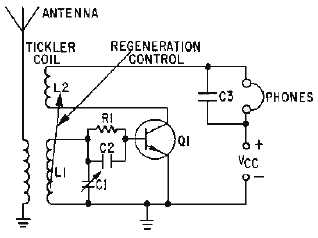3-5
distinguished easily by a selective circuit because they differ by 30 percent (compared to the 0.003
percent above).
Even if two stations produce identical beat frequencies, they can be separated by adjusting the
local-oscillator or BEAT-FREQUENCY OSCILLATOR (bfo) frequency. For example, if the second
station in the previous example had been operating at 10,002,000 hertz, then both stations would have
produced a 1,000-hertz beat frequency and interference would have occurred. Adjusting the
local-oscillator frequency to 9,999,000 hertz would have caused the desired station at 10,000,000 hertz to
produce a 1,000-hertz beat frequency. The other station, at 10,002,000 hertz, would have produced a beat
frequency of 3,000 hertz. Either selective circuits or the operator can easily distinguish between these
widely differing tones. A trained operator can use the variable local oscillator to distinguish between
stations that vary in frequency by only a few hundred hertz.
Q-3.
What is the simplest form of cw detector?
Q-4.
What are the essential components of a cw receiver system?
Q-5.
What principle is used to help distinguish between two cw signals that are close in frequency?
Q-6.
How does heterodyning distinguish between cw signals?
REGENERATIVE DETECTOR
A simple, one-transistor REGENERATIVE DETECTOR circuit that uses the heterodyning principle
for cw operation is shown in figure 3-4. The circuit can be made to oscillate by increasing the amount of
energy fed back to the tank circuit from the collector-output circuit (by physically moving tickler coil L2
closer to L1 using the regeneration control). This feedback overcomes losses in the base-input circuit and
causes self-oscillations which are controlled by tuning capacitor C1. The received signal from the antenna
and the oscillating frequency are both present at the base of transistor Q1. These two frequencies are
heterodyned by the nonlinearity of the transistor. The resulting beat frequencies are then rectified by the
emitter-base junction and produce a beat note which is amplified in the collector-output circuit. The af
currents in the collector circuit actuate the phones. The REGENERATIVE DETECTOR (figure 3-4)
produces its own oscillations, heterodynes them with an incoming signal, and rectifies or detects them.
Figure 3-4.—Regenerative detector.

